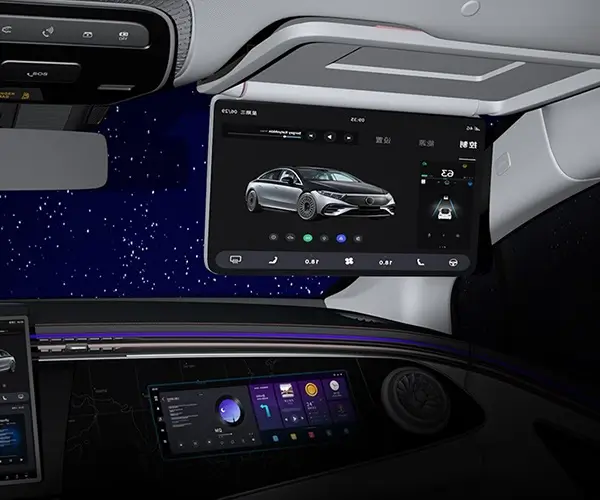In the realm of modern machinery and automation, the quest for precision, efficiency, and reliability is unending. Among the technological marvels propelling this revolution are brushless DC (BLDC) motors and their indispensable companions—the servo amplifiers that breathe life into them. Picture a symphony of engineering mastery where every note is perfectly tuned to deliver seamless, responsive motion control. This harmonious interaction is at the heart of brushless DC motor servo amplifiers, which have transformed how industries approach automation.

What Are Brushless DC Motor Servo Amplifiers?
At its core, a brushless DC motor servo amplifier is an electronic device that powers a BLDC motor with precise voltage and current regulation, allowing for meticulous control of the motor's speed, torque, and position. Unlike traditional brushed motors, BLDC motors operate without brushes, utilizing electronic commutation to switch the current within their stator coils, which results in higher efficiency, less maintenance, and longer lifespan.
The servo amplifier serves as the brain behind the motor's operation. It receives commands—either from a control system or a user interface—and converts these signals into actionable power outputs. This process ensures that the motor responds accurately and swiftly to dynamic control inputs, making it ideal for applications demanding high precision.
Why Choose Brushless DC Motors?
Before delving deeper into the amplifier’s roles, it helps to understand their partner—the BLDC motor itself. These motors are favored in many sectors because of their high efficiency, excellent speed-torque characteristics, and durability. Without brushes and commutators that wear out over time, BLDC motors deliver consistent performance over extended periods.
Moreover, with intelligent electronic control, BLDC motors can achieve rapid acceleration, deceleration, and fine positional adjustments—all vital in robotics, aerospace, automotive, and manufacturing applications. Their design inherently minimizes electromagnetic interference and reduces electrical noise, contributing to cleaner operation.
The Driving Need for Advanced Control
Traditional motor control methods often struggle with the demands of modern automation: higher speeds, greater accuracy, and more complex movements. This is where advanced servo amplifiers come into play. They provide:
High dynamic response: Ensuring the motor reacts instantaneously to control signals. Precise positioning: Facilitating tasks like CNC machining, robotic arms, or camera gimbals where exact movements are critical. Robust torque control: Managing the force exerted by the motor, even under varying load conditions. Efficient energy use: Minimizing power waste, which reduces operational costs.
Components and Working Principle
A typical brushless DC motor servo system consists of several core components:
BLDC Motor: The core mover, designed with permanent magnets on the rotor and coils on the stator. Servo Amplifier: Acts as the power conversion and control unit, interpreting signals and supplying the appropriate power. Feedback Devices: Encoders, resolvers, or Hall sensors that relay position, speed, or torque data back to the controller. Controller: The brain of the operation, which processes feedback and generates commands for the amplifier.
The process begins with a command input—say, позиция на установочной линии или желаемая скорость. The controller interprets these commands and adjusts the output signals to the servo amplifier. The amplifier then supplies the precise voltage and current to the motor coils, producing the desired movement. The feedback device constantly reports motion parameters back to the controller, enabling real-time adjustments that keep the motor’s operation finely tuned.
Advantages Over Traditional Systems
The synergy of BLDC motors with sophisticated servo amplifiers offers multiple advantages:
Enhanced Efficiency: No brushes means less mechanical wear and energy loss, translating into longer-lasting systems and lower operational costs. Superior Accuracy: Closed-loop feedback systems allow for nanometer or millisecond precision—an essential feature in high-tech sectors. Reduced Maintenance: Fewer parts susceptible to wear means less downtime and lower maintenance expenses. Quiet and Smooth Operation: Electronic commutation eliminates sparking and mechanical noise, leading to quieter, more comfortable machinery environments. Versatility: Suitable for a wide range of applications—from small medical devices to large industrial robots.
Emerging Trends and Innovations
The landscape of brushless DC motor servo amplifiers is rapidly evolving. Integration of digital control algorithms, advanced filtering, and IoT connectivity enhances their functionality. Modern amplifiers are equipped with features like predictive diagnostics, adaptive control, and enhanced thermal management, pushing the boundaries of what these systems can achieve.
Furthermore, innovations in semiconductor technology—such as silicon carbide and gallium nitride devices—are enabling smaller, more efficient, and more powerful amplifiers. This progress allows for higher voltage operation, improved thermal performance, and reduced size, expanding the possibilities within compact systems.
In industrial automation, these developments result in smarter, more autonomous machines capable of self-diagnosis and optimization. Robots become more precise and adaptable, automotive systems more energy-efficient, and aerospace components more reliable.
The Significance in Industry
From semiconductor manufacturing to aerospace navigation, from precision medical instruments to automated packaging lines, the applications for brushless DC motor servo amplifiers are vast. They form the backbone of systems where milliseconds matter and tolerances are tight.
As industries continue to demand faster cycles, higher accuracy, and increased reliability, the role of these amplifiers becomes even more critical. They’re not just an element of motor control—they symbolize the apex of engineering finesse, combining power electronics, control theory, and mechanical design into a unified solution.
Established in 2005, Kpower has been dedicated to a professional compact motion unit manufacturer, headquartered in Dongguan, Guangdong Province, China.




































